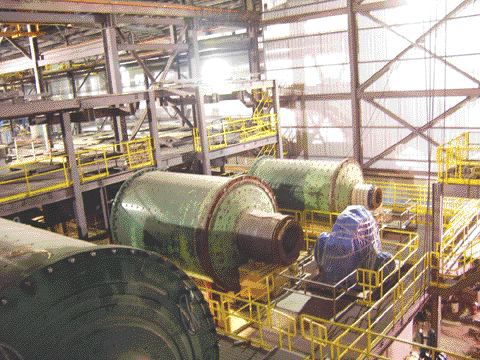With the firing of its chief financial officer, John Knowles, and a new listing on Chile’s Santiago Stock Exchange, these days are a mixed bag for Aur Resources (AUR-T, AURRF-O).
While the dismissal of a CFO who’s served for only a year — at a time when the books look so strong — could be seen as a red flag, analysts agree that the strong price of copper is still the biggest factor determining the robust price of Aur shares.
On April 15, 2005, the company’s shares were trading at $6.50. At presstime, shares in the company were well above $16.00 apiece.
But while much of Aur’s success is attributed to the operational skills of its founder, president and chief executive James Gill — working under Gill is said to be, at times, trying.
Gill started Aur in 1981, and has built the company into a well-respected, mid-tier pure copper play. Sources say during that time he’s won a reputation for getting the company’s ducks in a row, but tends to micro-manage his staff — a characteristic that some say led to a conflict with Knowles.
Gill says while his hands-on approach may go further than other chief executives, he sees it as his responsibility to know what’s going on in his company on all levels.
On the phone from the company’s operations in Chile, Gill went on to say that Knowles’ dismissal was related to concerns that the CFO didn’t fit in with the team in a way that was necessary for growth. But he emphasized that Knowles’ departure had nothing to do with any impropriety regarding accounting or business ethics.
Pierre Vaillancourt, an analyst with Toronto-based Orion Securities, says he was surprised by the firing.
“Knowles was generally well regarded by the analyst community,” he says. “It was unfortunate that he was there only one year.”
McCarter wouldn’t say when a new CFO would be brought in. In the meantime, vice-president Ed Guimaraes will assume the role. Guimaraes, who has been with the company for 11 years, also filled in when former CFO Ron Gagel resigned in December 2004. It took roughly five months to find a replacement for Gagel.
In fact, there is speculation that Guimaraes could become Aur’s permanent CFO.
If Guimaraes stays in his current post, he will be well positioned to succeed. The company has about US$360 million in cash and working capital. With those funds, Aur will continue to explore its Andacollo copper mine in Chile.
While Andacollo is already one of the company’s major copper producers — the other being Quebrada Blanca — a significant sulphide resource is beneath the ore currently being mined.
McCarter says Aur expects to have a feasibility study completed sometime in May.
A prefeasibility study, carried out in 1998, indicated that a capital investment of US$280 million could bring the mine into production of 174 million lbs. copper and 55,000 oz. gold annually for 15 years.
As it stands, the resource contains roughly 311 million tonnes of ore at an average grade of 0.46% copper and 0.15 gram gold per tonne.
The operating mine at Andacollo is already producing roughly 46 million lbs. of cathode copper annually. Aur owns 63% of the mine; partners Compania Minera del Pacifico holds 27% with ENAMI holding the balance.
As for its other major asset in Chile, Quebrada Blanca, the open-pit mine produces about 176 million lbs. of cathode copper annually.
Aur has a 76.5% interest in the mine.
Share price rebound
When taken with the high price of copper, such enviable assets have fuelled a rebound from Aur’s share-price slump in early February.
At the time, BMO Nesbitt Burn analyst Victor Lazarovici told The Globe and Mail that the company’s 2006 copper shipments would fall 13% to 167 million lbs. from 2005 levels because of the closure of the Louvicourt mine, near Val d’Or, Que., in July 2005.
But Aur’s Duck Pond project in Newfoundland, coming online in the fourth quarter of 2006 at a cost of roughly $79 million, should make up for any lost production from the closure of Louvicourt.
Duck Pond is expected to be a 1,500-tonne-per-day mining operation, which would generate an average of 32 million lbs. copper and 53 million lbs. zinc annually over an 8-year mine life.
While Louvicourt turned out a much higher amount of copper — 4,300 tonnes of ore per day and 86 million lbs. copper and 39 million lbs. zinc per year — Aur only held a 30% interest in the mine. Teck Cominco (TEK.SV.B-T, TCKBF-O) held a 25% stake and Novicourt (NOV-T, NOVFF-O) held the final 45% stake. Aur holds a 100% stake in Duck Pond.
In other news, the company announced it would become the first North American company to be listed on the Santiago Stock Exchange. The exchange was founded in 1893 and traded a total of US$20 billion last year. As the only widely held copper company on the exchange, Aur says it will meet both institutional and retail investor demand in Chile.
Vaillancourt says the listing is not of major significance to the Street in North America.
“If it can generate more investors and make them more well known, then there’s nothing wrong with it,” he says. “But generally, it’s a minor thing.”


Be the first to comment on "Aur finds copper highway has a few bumps"